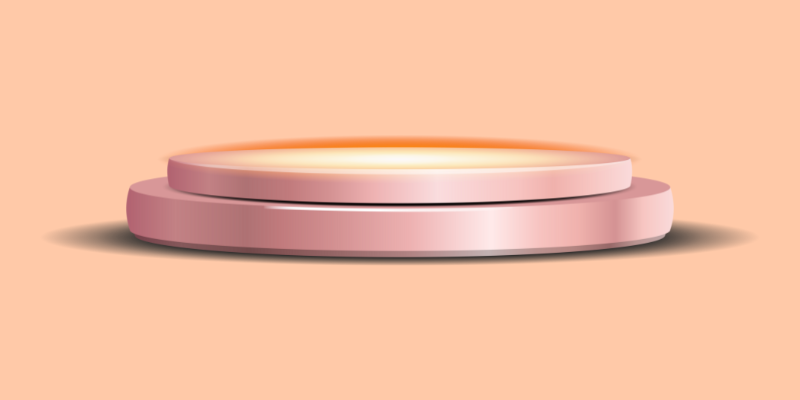Do you know the original gold has only one color and is soft? The soft nature makes it almost impossible to turn into everyday wear jewelry. Since it is one of the few metals that do not rust, tarnish, or corrode, we prefer it to make jewelry.
As you know pure gold is super soft, to turn it into jewelry we have to mix it with other metals.
The most commonly used metals are silver, copper, nickel, iron, zinc, tin, manganese, cadmium, or titanium. This mixture makes the gold hard, however, it affects the color.
Due to the mixture of metals, the gold jewelry that has to be orange-yellow comes in a variety of colors. Want to know how many colors you can get? Spoiler alert; it’s not just yellow and white.
Colors of Gold
Before moving ahead to discover and discuss the colors of gold, it is important to mention here that pure gold comes in one color: orange-yellow. So, orange and yellow is the only true color.
The gold jewelry however comes in many colors. Gold jewelry is now available in a variety of colors and there are some solid chances more colors would develop. The colors available at the moment are;
- Yellow gold
- White gold
- Rose gold
- Green gold
- Gray gold
- Purple gold
- Blue gold
- Black gold
1. Yellow gold

Yellow gold is the most commonly worn color of gold. It is more common in Asian countries than in the western world.
Even if it’s not that common in the western world, yellow gold is still the most commonly worn and preferred color of gold.
The most common misconception about yellow gold is that it is believed to be pure gold.
This misconception might be caused by the resemblance of the original gold color. However, this is not true, the yellow gold that we wear every day is also a mixture of pure gold and some metals.
The yellow gold jewelry is a mixture of original orange-yellow gold and some metals such as copper and zinc.
The mixture of copper or zinc turns the orange-yellow gold into a creamier yellow colour.
As per Science Direct commonly used yellow gold(18k) contains 75% orange-yellow pure gold and 25% copper or zinc. The percentage of copper or zinc gives the creamy color and makes it strong enough for everyday use.
2. White gold

The other most commonly used and preferred color of gold across the globe is white.
White gold has been around since the 19th century. However, it started gaining popularity in the 20th century and now it has become the second most-worn gold color.
We see the white gold used in engagement/wedding rings, necklaces, earrings, and belts.
It is just as loved and demanded as yellow gold. However, white gold is a bit more expensive than Yellow.
The demand does not affect the price of the white gold; it’s the manufacturing process and the rhodium coating that makes the white gold expensive.
The white gold is formed when the pure orange-yellow gold is mixed with white metal.
The white metals that are mixed with yellow gold to make the white gold are usually nickel, palladium, silver, or zinc.
The mixture of the white metal turns the pure orange-yellow and then into a light-grey color. It is then rhodium plated to give gold a sought-after sheen.
3. Rose gold

Rose gold has a unique color that can make almost anyone question whether it’s real gold or not.
It is generally referred to as pink gold and red gold as well. The orange-yellow gold develops the rose gold color when mixed with copper.
It is just as reliable as the other colors. However, it does not have the insane demand as yellow and white gold.
What’s more worth mentioning about rose gold is that it contains a good amount of copper.
The percentage of copper makes rose gold more durable than the most commonly used yellow gold.
This type or color of gold is less expensive compared to the two above-mentioned ones.
The reason is the metal(copper) that is used in crafting rose gold to perfection is comparatively cheaper than the metals used in white and yellow gold. It is more prevalent in Russia.
Rose gold was and still has been more in demand in Russia than in the rest of the world. Therefore, the world knows it as Russian gold. Rose gold resembles Strawberry Gold in color shade.
4. Green gold

Green and all the other below-mentioned colors are the least-worn and preferred shades of gold. However, unlike a few other shades, the history of green gold stretches back to the 6th century BC.
Back in that time, green gold was referred to as white gold and it was used on the clothes of most sacred structures like obelisks and pyramids.
The green gold is crafted by mixing pure orange-yellow gold and the metals like silver, copper, zinc, cadmium, and nickel. Sometimes gold becomes green due to many reasons.
Green gold is less demanded due to the presence of nickel and cadmium. These two metals are believed to be toxic for human beings.
The green gold comes in 14k and 18k versions. If green gold is preferred for any reason, 14k is often considered.
The 18k is more valuable but not preferred because it contains a good amount of both nickel and cadmium.
The cadmium can cause cancer and affects the cardiovascular, renal, gastrointestinal, neurological, reproductive, and respiratory systems. Where nickel can cause allergies, cardiovascular and kidney diseases, lung fibrosing, and lung and nasal cancer. Therefore, green gold is in less demand and hardly seen in the form of jewelry.
5. Gray gold

Gray is a shade of gold that often gets confused with white gold. It is the shade of gold that has a moderate demand; neither too high nor too low.
The orange-yellow gold is turned into grey by mixing it with palladium, silver, or iron.
Grey gold can be expensive or cheaper. If the pure gold is mixed with the palladium to obtain the grey color, the outcome would be expensive. Otherwise, grey gold is quite an economical option than most types of gold.
6. Purple gold

Yes, the gold comes in purple as well. The purple-colored gold is recognized as violet gold or amethyst gold. Unlike the other unique colors of gold, purple gold also does not occur naturally.
It is rather prepared in the lab by mixing pure orange-yellow gold with some metal.
This shade was developed by metallurgist Professor Loh after a lot of research. However, it failed to gain popularity because of its ultra-soft nature.
Amethyst gold or violet gold is an alloy of gold and aluminum. You can expect it to be more brittle than most types of gold. It is so brittle that it only takes a sharp blow to shatter it into pieces. Therefore People usually do not prefer it to be used in jewelry.
7. Blue gold

Blue gold is a color of gold that most of us have yet to discover. It is bold, unique, and has recently been gaining popularity. However, we have started seeing the presence in the jewelry items. However, it still has not gained the recognition it should have.
An Argentinian Jeweller named Antoniassi introduced the color to the world. It became a sensation immediately. However, the Argentinian jeweler kept the crafting process secret. Therefore, despite the efforts, no one managed to make the same shade as Antoniassi.
The Blue color gold that we rarely get to see nowadays is a result of constant experiments.
It has been said that this shade is developed by mixing pure orange-yellow gold with indium or gallium.
The colored gold is quite affordable. However, blue gold is quite an exception. It is because this unique and bold shade of gold is breathtakingly rare. Therefore, it is super expensive.
8. Black gold

The gold is available in black color as well. This color looks trendy however still preference is hardly given to this color.
The reason is that black gold can not retain its color for a long time. If it is used frequently and not stored well, the black gold loses its color within a year.
As per research, Black gold is usually an outcome of chemical vapor deposition, patination, or oxidatioChemicalcal vapor deposition, patination, and oxidation are just a name of the complex plating procedures.
No mixture or crafting process can make the gold black. The black gold is “actually” white gold with a black coating.
Therefore regular use and inappropriate fatigue fade away the black color making the jewelry white again.
In brief, pure gold comes in only one orange-yellow color. However, it is soft therefore to make jewelry it is combined with other metals.
These metals give gold strength and different colors; yellow, white, green, purple, grey, rose, blue, and black.
The black is not a color, it’s a coating over white gold. However, it is still known as black gold.
